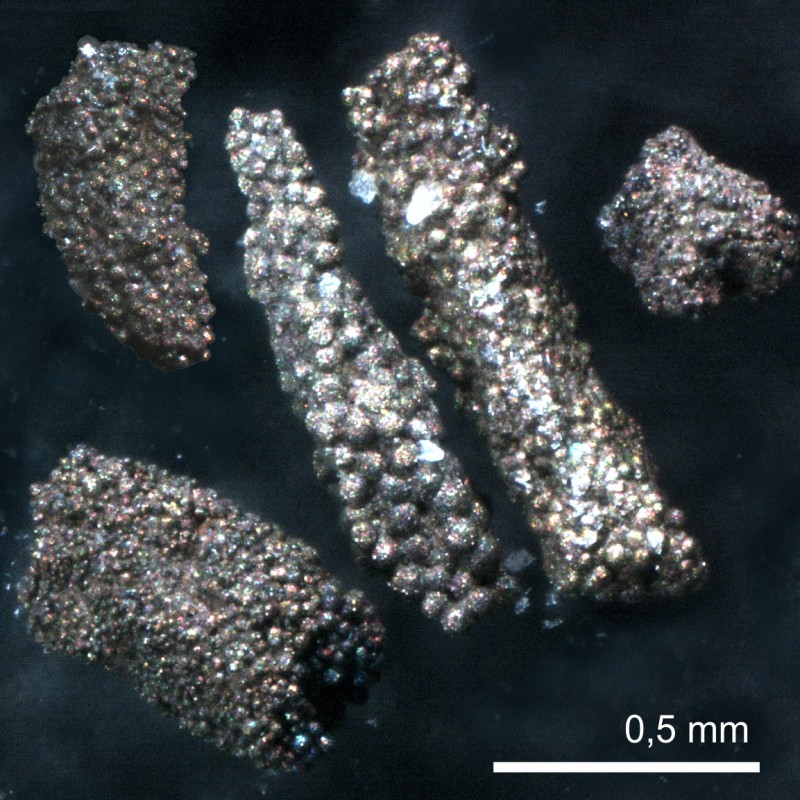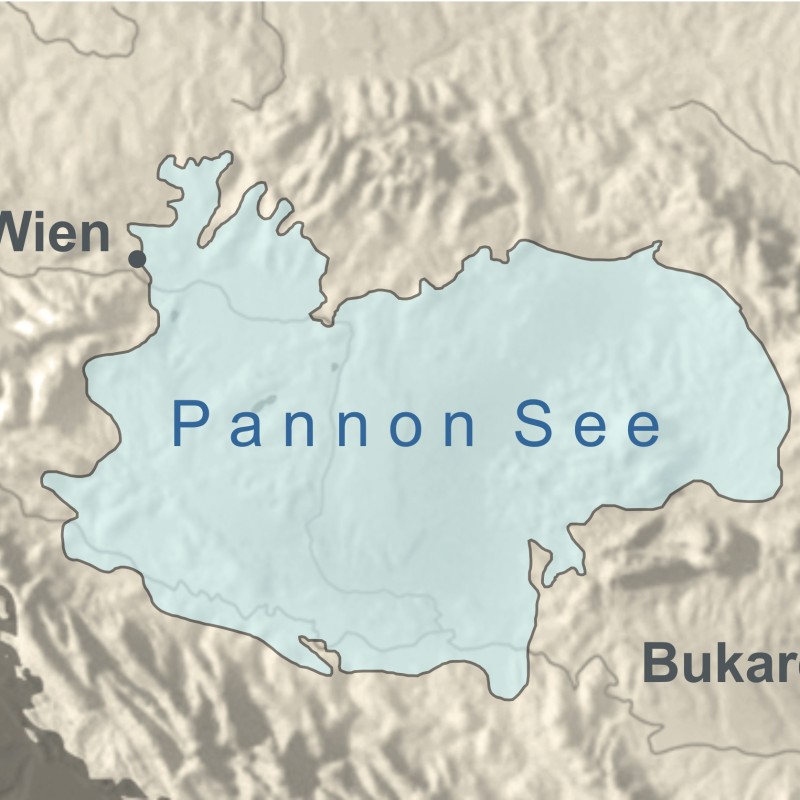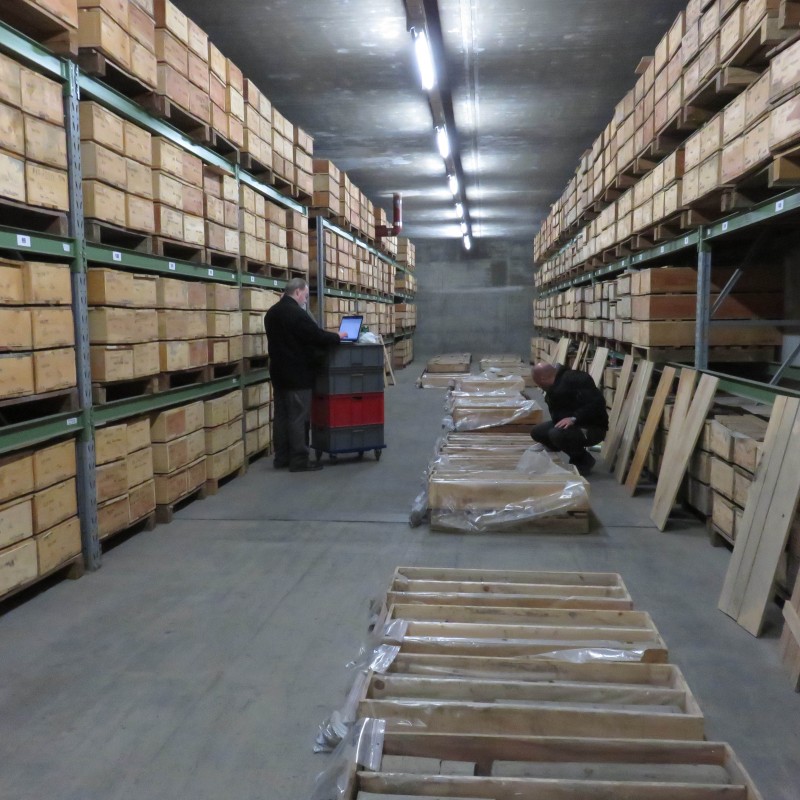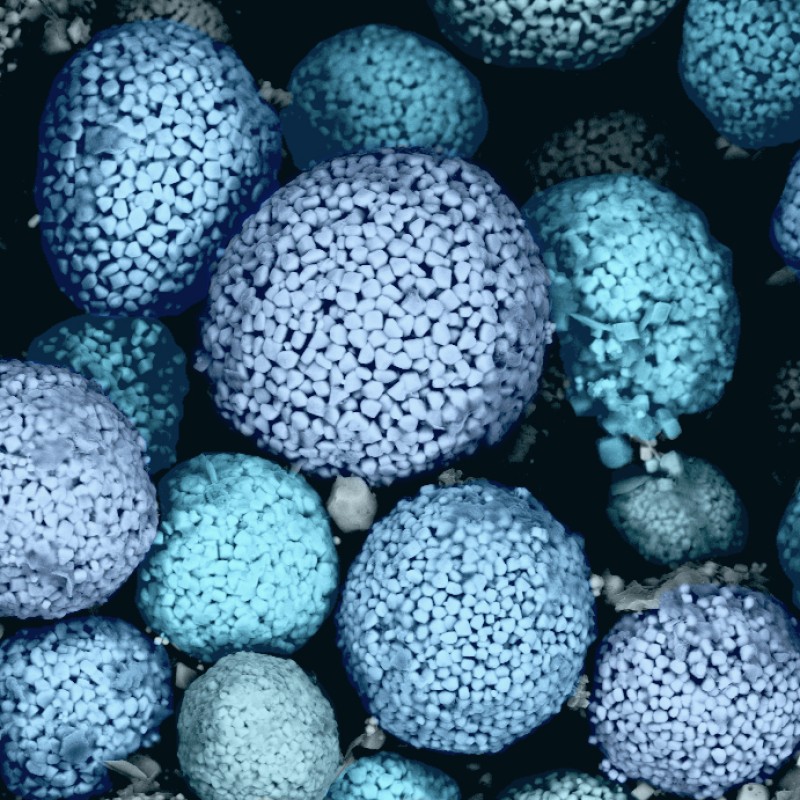Secret of mysterious fossils from Vienna's underground uncovered!
19. June 2023
Tiny pyrite tubes found in boreholes in the context of the construction of a new underground line in Vienna contain clues
about unusual methane production 11 million years ago.
In the course of the construction of the underground
in Vienna, geologists of the Natural History Museum Vienna were given unexpected insights into the city's underbelly. Numerous
boreholes served to document Vienna’s geological past. Under the lead of Mathias Harzhauser, a team focused particularly on
the mighty clay deposits created by a huge lake about 11 million years ago. Named Lake Pannon, it covered the entire Pannonian
Basin, extending from the Czech Republic to Serbia. Vienna was located on the lake’s western shore. The numerous fossilised
shells of mussels and snails enable the scientists to reconstruct in detail the habitats of this unusual lake, which existed
for more than 5 million years. However, long borehole sections that contained no fossils at all were unexpected for the geologists.
Instead of fossils, the researchers discovered tiny tubes measuring only a few millimetres in length. The microscope revealed that the tubes were composed of tiny spheres of the mineral pyrite – structures that were previously unknown. After conducting extensive analyses of these enigmatic structures, an international team led by Zhiyong Lin from the Centre for Earth System Research and Sustainability at the University of Hamburg uncovered their secret.
The spheres were created by microorganisms that feed on methane. “The tubular structures probably developed along tiny ducts through which the gas rose up through the mud,” says principal investigator Lin. The methane itself was previously formed by a different group of microorganisms. This unusual community was the reason why the hot climate of the time did not tip even further 10 million years ago. After all, methane is one of the strongest and most dangerous greenhouse gases. Today, besides carbon dioxide, climate change is driven mainly by methane created livestock and rice fields. A climate killer when released into the atmosphere, methane serves as food for microorganisms in marine mud and lake beds.
“Hence, 11 million years ago, the microorganisms prevented something worse from happening by eating up the methane,” explains Mathias Harzhauser. But this will only work if their habitat is completely free of oxygen. What was a hostile zone of death for most organisms turned out to be a paradise for this group of microorganisms. And this also explains why no other fossils were found here.
These spectacular results have now been published in the Communications Earth & Environment journal.
Lin, Z., Strauss, H., Peckmann, J., Roberts, A.P., Lu, Y., Sun, X., Chen, T., Harzhauser, M. 2023. Seawater sulphate heritage governed early Late Miocene methane consumption in the long-lived Lake Pannon. Communications Earth & Environment, | (2023)4:20.
https://doi.org/10.1038/s43247-023-00879-2
Instead of fossils, the researchers discovered tiny tubes measuring only a few millimetres in length. The microscope revealed that the tubes were composed of tiny spheres of the mineral pyrite – structures that were previously unknown. After conducting extensive analyses of these enigmatic structures, an international team led by Zhiyong Lin from the Centre for Earth System Research and Sustainability at the University of Hamburg uncovered their secret.
The spheres were created by microorganisms that feed on methane. “The tubular structures probably developed along tiny ducts through which the gas rose up through the mud,” says principal investigator Lin. The methane itself was previously formed by a different group of microorganisms. This unusual community was the reason why the hot climate of the time did not tip even further 10 million years ago. After all, methane is one of the strongest and most dangerous greenhouse gases. Today, besides carbon dioxide, climate change is driven mainly by methane created livestock and rice fields. A climate killer when released into the atmosphere, methane serves as food for microorganisms in marine mud and lake beds.
“Hence, 11 million years ago, the microorganisms prevented something worse from happening by eating up the methane,” explains Mathias Harzhauser. But this will only work if their habitat is completely free of oxygen. What was a hostile zone of death for most organisms turned out to be a paradise for this group of microorganisms. And this also explains why no other fossils were found here.
These spectacular results have now been published in the Communications Earth & Environment journal.
Lin, Z., Strauss, H., Peckmann, J., Roberts, A.P., Lu, Y., Sun, X., Chen, T., Harzhauser, M. 2023. Seawater sulphate heritage governed early Late Miocene methane consumption in the long-lived Lake Pannon. Communications Earth & Environment, | (2023)4:20.
https://doi.org/10.1038/s43247-023-00879-2
Lake Pannon 11 million years ago. While the surface was a habitat to
schools of fish, only bacteria could survive at the bottom of the lake.
© NHM Wien, Mathias Harzhauser
Geologists from the NHM taking samples. The boxes contain the drill cores
created for the geological investigations in the context of the underground construction.
© NHM Wien, Mathias Harzhauser





